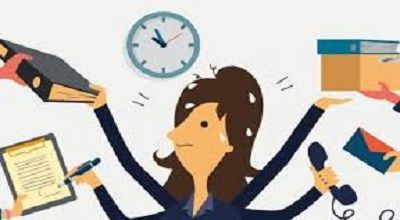Work-Life Balance of Teachers
Work-Life Balance of Teachers: Teaching is one of the most noble yet demanding professions in the Philippines. Educators play a crucial role in shaping the future, but they often struggle with maintaining a healthy work-life balance. Long working hours, administrative tasks, and emotional stress contribute to burnout, affecting both their personal lives and professional performance.
This article explores the latest trends, challenges, and solutions regarding the work-life balance of teachers in the Philippines. We will examine government policies, institutional support, and personal strategies that can help educators achieve a more sustainable lifestyle.
Understanding Work-Life Balance
Work-life balance refers to the equilibrium between professional responsibilities and personal life. For teachers, this means managing classroom duties, lesson planning, grading, and administrative work while also having time for family, hobbies, and self-care.
Key Components of Work-Life Balance
- Time Management – Allocating sufficient time for work and personal activities.
- Emotional Well-being – Reducing stress and preventing burnout.
- Physical Health – Ensuring adequate rest, exercise, and nutrition.
- Social Connections – Maintaining relationships outside of work.
A healthy balance leads to higher job satisfaction, better teaching performance, and improved quality of life.
Current State of Teachers in the Philippines
Teachers in the Philippines face unique challenges due to:
- Heavy Workloads – Handling large class sizes, multiple subjects, and extracurricular duties.
- Low Salaries – Many teachers take on side jobs to make ends meet.
- Administrative Burdens – Excessive paperwork and compliance requirements.
- Remote Learning Adjustments – The shift to online and hybrid teaching added new stressors.
According to recent surveys, over 60% of Filipino teachers report high stress levels, with many working beyond official hours to meet demands.
Challenges Affecting Teachers’ Work-Life Balance
A. Excessive Workload
- Lesson planning, grading, and reports consume personal time.
- Handling multiple roles (adviser, club moderator, event organizer).
B. Financial Stress
- Salaries often do not match the workload, forcing teachers to seek additional income.
C. Lack of Support Systems
- Limited access to mental health resources.
- Minimal administrative assistance for non-teaching tasks.
D. Technology and Remote Work Pressures
- Adjusting to digital tools increases stress for less tech-savvy educators.
- Blurred boundaries between work and home life.
Impact of Poor Work-Life Balance on Teachers
- Burnout – Emotional exhaustion, reduced motivation.
- Health Issues – Sleep deprivation, hypertension, anxiety.
- Decreased Teaching Quality – Fatigue affects classroom performance.
- High Attrition Rates – Many teachers leave the profession early.
Government and Institutional Support
A. Department of Education (DepEd) Initiatives
- Wellness Programs – Mental health webinars, fitness activities.
- Salary Increases – Recent adjustments under the Salary Standardization Law.
- Reduced Administrative Tasks – Streamlining paperwork.
B. School-Level Interventions
- Flexible Scheduling – Allowing compressed workweeks where possible.
- Peer Support Groups – Encouraging teacher communities for emotional support.
Strategies for Improving Work-Life Balance
A. Time Management Techniques
- Prioritize tasks using the Eisenhower Matrix.
- Batch similar activities (grading, planning) to save time.
B. Setting Boundaries
- Designate “no work” hours at home.
- Learn to say no to excessive responsibilities.
C. Self-Care Practices
- Regular exercise, meditation, and hobbies.
- Seeking professional counseling when needed.
D. Leveraging Technology
- Using productivity apps (Google Classroom, Trello) to automate tasks.
Success Stories: Teachers Who Achieved Balance
- Case Study 1: A public school teacher who implemented strict time blocking.
- Case Study 2: An educator who transitioned to freelance tutoring for flexibility.
These examples show that balance is achievable with the right strategies.
Future Outlook for Philippine Educators
- Potential policy reforms for better teacher welfare.
- Growing awareness of mental health in the education sector.
- Increased use of AI and automation to reduce workloads.
Conclusion
Achieving work-life balance is critical for Filipino teachers to sustain their passion and effectiveness. While systemic challenges remain, proactive measures from institutions and individuals can lead to meaningful improvements.
FAQs
1. What is the biggest challenge for teachers’ work-life balance in the Philippines?
The excessive workload, including teaching, administrative tasks, and extracurricular duties, is the primary challenge.
2. How can teachers manage stress effectively?
Practicing mindfulness, setting boundaries, and seeking peer or professional support can help.
3. Are there government programs to help teachers with work-life balance?
Yes, DepEd has wellness programs and is working on reducing non-teaching tasks.
4. Can technology improve work-life balance for teachers?
Yes, digital tools can automate grading and lesson planning, saving time.
5. What are some signs of teacher burnout?
Chronic fatigue, irritability, decreased job satisfaction, and health problems are common signs.
Free Here: Typing Master APK
